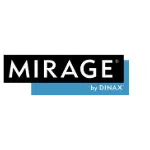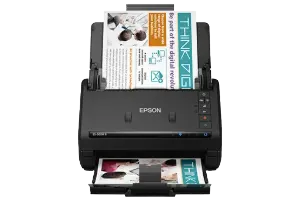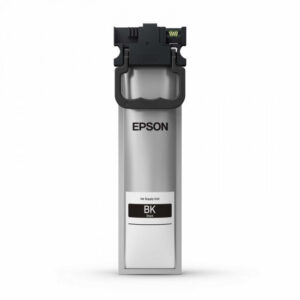
Dye-Based Vs. Pigment-Based Ink: Which One to Choose? Leave a comment
In the world of printing and writing, ink is the lifeblood that brings words and images to life on paper. Among various ink types, two main options stand out: dye-based ink and pigment-based ink. Each type has its unique characteristics, advantages, and drawbacks. In this article, we will delve into the fundamental dissimilarities between dye-based inks and pigment-based inks. Additionally, we’ll provide insight into their strengths and weaknesses.

What is Dye-Based Ink?
Dye-based ink is a widely used type of ink for printing purposes. It consists of soluble colorants that are dissolved in a liquid carrier, usually water. When applied to paper or other printing surfaces, the ink is absorbed, resulting in vibrant and vivid colors. It is favored for its ability to produce high-quality, photo-realistic images. Moreover, it is commonly used in home printers, photo printers, and graphic design applications. However, it does have its limitations, such as a tendency to fade over time, especially when exposed to sunlight or harsh environmental conditions. Despite this drawback, it remains a popular choice for producing stunning and cost-effective prints with exceptional color output.
What is the Advantages of Dye-Based Ink?
Color Vibrancy: Dye-based inks create vivid colors, ideal for high-quality photo and graphic printing needing vibrant color reproduction.
Quick Drying: Dye-based inks typically exhibit a quicker drying time compared to other ink types. This quality can be beneficial for preventing smudging and enabling faster printing.
Cost-Effective: Dye-based inks are often more affordable than their pigment-based counterparts, making them a popular option for everyday printing needs.
Compatibility: Dye-based inks offer compatibility with a diverse range of paper types, including glossy and matte papers. This provides a flexible and versatile printing experience.
Ideal for Non-Critical Documents: These inks are effective for documents that do not necessitate long-lasting print quality, such as drafts, temporary prints, or disposable materials.
What is the Disadvantages of Dye-Based Ink?
Fading and Longevity: Dye-based inks have a higher susceptibility to fading over time, especially when exposed to sunlight or harsh environmental conditions. As a result, they are not as well-suited for archival purposes.
Water Solubility: Dye-based inks are soluble in water, making them susceptible to smudging and blurring if exposed to water or other liquids.
Smudging on certain papers: On some types of paper, particularly those with a porous surface, dye-based inks may take longer to dry, increasing the likelihood of smudging.
Lower UV Resistance: Compared to pigment-based inks, dye-based inks offer lesser UV resistance, leading to faster degradation of prints when exposed to ultraviolet rays.

What is Pigment-Based Ink?
Pigment-based ink is a type of ink used in various printing applications. It contains solid, finely ground color particles (pigments) suspended in a liquid carrier, typically water or a mixture of water and glycol. These pigments provide distinct advantages over dye-based inks: enhanced color longevity, water and fade resistance, and improved color accuracy. In professional photo printing, fine art reproduction, and archival document printing, professionals use pigment-based inks to produce essential long-lasting and vibrant prints. The encapsulated pigments in the ink do not fully dissolve, ensuring sharp and crisp print results on different media. This quality makes them the preferred choice for high-quality printing.
What is the Advantages of Pigment-Based Ink?
Water and Fade Resistance: Pigment-based ink possesses excellent water and fade resistance. Due to the larger and more chemically stable pigment particles, the printed output is more durable and less likely to smudge or fade over time. This is especially important for documents or photos that must withstand light and moisture exposure.
Longevity: Pigment-based prints have a longer lifespan compared to dye-based prints. These prints are capable of maintaining their quality and vibrant colors for extended periods. Therefore, they are ideal for archival purposes and the preservation of documents over the long term.
Sharpness and Precision: Pigment inks generally yield sharper and more precise prints. The ink particles remain on the paper’s surface without spreading or bleeding, leading to distinct edges and fine details in the printed output.
Versatility: Pigment-based inks offer versatile applications on various media, such as regular paper, glossy paper, fine art paper, matte paper, and specialty papers. They adhere well to various surfaces, providing consistent results across paper types.
What is the Disadvantages of Pigment-Based Ink?
Limited Ink Compatibility: Pigment-based inks do not have universal compatibility with all printers. Certain older or lower-end inkjet printers might not support pigment inks, which can restrict your choices if you intend to transition from dye-based to pigment-based ink.
Cost: Pigment-based inks are generally more expensive than dye-based inks. The manufacturing process and the use of high-quality pigment particles contribute to the higher cost.
Drying Time: Pigment ink can take slightly longer to dry compared to dye-based ink, which can be a concern if you need immediate handling of freshly printed materials.
Conclusion
In summary, the choice between dye-based and pigment-based ink depends on your specific printing needs and preferences. If you prioritize vibrant colors and are on a budget, dye-based ink could be the way to go. On the other hand, if you require long-lasting prints with excellent fade resistance, pigment-based ink is the better choice. Consider your priorities and usage requirements before making your decision, and you’ll be on your way to producing outstanding prints every time!
If you require information about the suitable ink for your printer, feel free to request a callback without any hesitation. Our team will assist you in choosing the best printer and the most appropriate ink for your needs.
For the latest updates and deals, please Follow us on our social media
Frequently Asking Questions
A pigment-based printer is a type of printing technology that uses pigment ink containing solid color particles, resulting in vibrant and long-lasting prints.
Dye-based ink contains colorants dissolved in liquid, providing vibrant hues but may fade over time. Pigment-based ink consists of solid particles suspended in liquid, yielding long-lasting prints with resistance to fading. Pigment inks are ideal for archival purposes, while dye inks offer immediate color brilliance.
Pigment-based ink is superior to dye-based ink for several reasons. It provides improved longevity, fade resistance, and water resistance, making it perfect for archival purposes and long-lasting prints. Although dye ink may initially offer more vibrant colors, the durability of pigment ink makes it the preferred choice for numerous professional applications.
















